|
Chardonnay and Sauvignon Blanc undeniably bring to mind France and, in
particular, Burgundy and Loire Valley. If it is true the origin of the second
grape actually is Bordeaux, it is in the Loire Valley Sauvignon Blanc has been
capable of expressing wines of great elegance, last but not the least, of
particular character. It is undeniable both grapes share the same fate of
globetrotter, just like other French grapes, even reaching countries
tens of thousand kilometers away. Chardonnay and Sauvignon Blanc are the emblem
of a specific wine making model: grapes frequently blamed of being excessively
found in too many wines, it is undeniable that - when used - their presence
does not pass unnoticed. Although they have different organoleptic qualities
and profiles, they are however capable of characterizing the wines in which
they are used in, by adding their unmistakable characters.
The fame of these grapes is such that, today, they are virtually found in every
wine making country of the world. The cause of such a remarkable success is
also because of the assumption made a long time ago, when it was believed
the quality of French wines was mainly determined by their grapes. An evidently
disputable supposition - no matter it is important, a grape, alone, cannot make
a quality wine - and only later it will be understood the secret was
something else. When they finally realized great wines require strict quality
viticultural and wine making practices, the famous international grapes
conquered the world already. We are not underrating, of course, the quality of
Chardonnay and Sauvignon Blanc, as facts - through the expression of the wines
made in their home country - can easily witness the excellence which is also
the result of the territory and efforts of man.
Being of Burgundian origin, a land in which it is capable of making wines of
magnificent elegance, Chardonnay is generally known in the world because of its
characteristic roundness. This quality is frequently used in winery in order to
smooth crisp and acidic wines, therefore to improve balance and, at the
same time, to meet the taste of certain consumers. The characteristic roundness
is widely responsible of the striking success Chardonnay obtained all over the
world, however, considering the famous Burgundian grape for this quality only,
would be a mistake of superficiality. If it is true Chardonnay is frequently
used for smoothing certain wines - therefore making them more
“immediate” and easy to sell - we should notice the versatility of this grape
is really remarkable. We can think, for example, Chardonnay is the only white
berried grape to be used for the production of Champagne and, moreover, it is
virtually found in every classic method sparkling wine all over the world.
Another appreciated quality of Chardonnay is to be particularly suited for the
fermentation and aging in wood, a technique making a wine more complex while
accentuating its roundness. Chardonnay is however capable of making wines of
good quality even in case it is vinified in inert containers, and, in this case,
it is capable of expressing its aromatic finesse and crispness. Its wine making
versatility is widely appreciated in the production of wines, as - by using
proper enological techniques - it is capable of making wines of distinct and
unique characters. Another characteristic for which Chardonnay is widely
appreciated is represented by its aromatic profile, recalling tropical fruits
and flowers, banana and acacia, in particular. Finally, despite it is rarely
used in this sense, Chardonnay proved to be successful in making interesting
sweet wines.
|
 | |
| The color of Chardonnay: straw yellow
with greenish yellow nuances | |
|
Having a completely different character, Sauvignon Blanc is appreciated for its
vibrant crispness and exuberant olfactory profile. It should be said, Sauvignon
Blanc is not an aromatic grape, however its particular olfactory profile have
led many to define this grape as semi-aromatic. A more demanding grape
than Chardonnay, Sauvignon Blanc is strongly affected by territory and, in
particular, climate, always making distinct wines in each of these conditions.
Sauvignon Blanc is frequently used to add aromas and crispness to those wines
poor in these characteristics, a contribution which can be easily and always
perceived in these wines. The character of this grape is such that, even in
minimal quantity, it is capable of substantially affecting the wines in which
it is found. Sauvignon Blanc expresses, in any case, the best of its character
and personality when vinified alone and, it should be said, it is a grape not
appreciated by everyone because of the particular and opposed expressions it
can create.
In areas having a mainly cool climate - such as Loire Valley, its preferred
land - Sauvignon Blanc makes very crisp wines and characterized by an aromatic
profile with evident vegetal nuances, box flower and bell pepper, in
particular. In areas having a warmer climate, such as Italy, Sauvignon Blanc
expresses an aromatic character made of exuberant tropical fruits, with no hint
of its typical vegetal profile. Aging, as it can be easily understood, greatly
affects the development of aromas and crispness, with a pretty wide
variability. It should be said that, in most of the cases, it is preferred to
keep and accentuate its typical crispness: for this reason it is very rare
Sauvignon Blanc is fermented or aged in cask or barrique. Its acidity makes it
very suited for the production of sweet wines, of which the most famous
examples are Sauternes and Barsac, where it is sometimes used.
Let's try to understand the peculiarities of both grapes by comparing them, and
using the contrast technique, in order to make differences evident, therefore,
their respective characteristics. The ideal study condition is made of three
wines: one Chardonnay and two Sauvignon Blancs, of which, one capable of
enhancing the “green” character of the grape, the second characterized by a
fruity profile, typical of warm areas. In order to better benefit from this
study, it is best the three wines to belong to the same vintage - however,
young - and made in inert containers. This will allow the expression of wines
without excessive influence of particular wine making techniques, such as cask.
The production of Chardonnay frequently provides for the fermentation or aging
in wood, therefore we need to pay attention on this and make sure the wine is
really vinified in inert containers.
The evaluation of appearance of the three wines let us see the respective
differences in colors, something which can be observed even with a quick
evaluation. In Sauvignon Blanc will be noticed a color recalling greenish
yellow, in particular in wines produced in cool climate areas. In the wine from
the warmer area, will however be noticed evident hues of greenish yellow,
despite the color may start to show nuances of straw yellow. This color is very
evident in Chardonnay, in which straw yellow is frequently seen in nuances as
well, something which can be observed by tilting the glass and evaluating the
upper edge of the wine. This color can also be observed in Sauvignon Blanc made
in warmer areas - in particular, in case the wine has been macerated in skins -
however showing a paler color, in general terms, than Chardonnay.
|
| 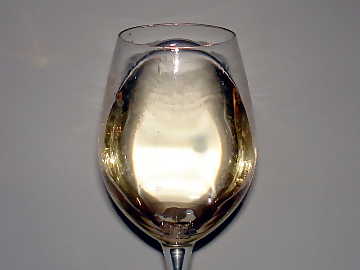 |
| The color of Sauvignon Blanc:
greenish yellow with nuances of the same color |
|
The study gets more interesting in the olfactory evaluation of the three wines.
It will in fact be enough a quick analysis of the three glasses in order to
understand the huge differences of each wine, even having opposed aromatic
profiles in many regards. Sauvignon Blanc, even in case it is made from grapes
cultivated in warm areas, despite its exuberant aromas of fruit and flowers, it
hardly denies its vegetal character. In these cases it is strongly attenuated,
however certain green characteristics, like to say, are always part of the
olfactory profile of its wines, although in delicate and light nuances. The
vegetal sensation is virtually unknown to wines made from Chardonnay, whereas
it can be sometimes perceived in certain classic method sparkling wines made
from this grape. Moreover, the vegetal sensation in Chardonnay can be perceived
in wines produced in grapes cultivated in particularly cool climate areas.
The nose of Sauvignon Blanc produced with grapes cultivated in cool climate
areas, expresses to the glass a profile strongly characterized by herbaceous
and vegetal sensations. It will be perceived, in fact, aromas of green bell
pepper, nettle, tomato leaf and cut grass. In certain cases, it will also be
perceived the characteristic smell of box flower, particularly appreciated by
the ones loving “old style” Sauvignon Blanc. In the wine produced with mature
grapes or cultivated in warm areas, it will be aromas of fruits, including
tropical fruit, to be mainly perceived from the glass. Gooseberry, peach,
pineapple, banana, citrus fruits and apricot are among the main aromas.
Tropical fruit characterizes Chardonnay as well, in particular banana, to which
is added apple, pear, plum, grapefruit, pineapple and peach. The world of
flowers gives Sauvignon Blanc aromas of elder, broom, hawthorn and acacia, this
latter one particularly intense in Chardonnay, to which are added hawthorn,
honeysuckle, linden, broom and lily.
Let's now pass to the evaluation of the gustatory profile of the three wines,
something which will make differences in the two grapes even more evident. The
attack of Sauvignon Blanc is very crisp and, in case of the wine produced in
cool climate areas, acidity becomes dominant, almost sharp. Roundness is pretty
low, while leaving to alcohol the main role in balancing crispness. In
Sauvignon Blanc produced in warm areas it can be perceived a higher roundness,
without attenuating the typical crispness of the wines produced with this
variety. Roundness becomes evident in the attack of Chardonnay, a quality
frequently appreciated by the ones loving this grape. Crispness is evident in
this wine as well, however it is roundness the main quality perceived in the
famous grape from Burgundy.
Differences are continued to be perceived in the final part of the evaluation.
The finish of Sauvignon Blanc, after having swallowed the wine, leaves to the
mouth a well perceptible crispness, always supported by flavors of tropical and
citrus fruits. Crispness becomes less perceptible - however evident - in
Sauvignon Blanc produced with mature grapes or cultivated in warm areas. In
this case, to the typical crispness, is also added a slight sensation of
roundness, however leaving to crispness the main role. The condition is quite
the opposite in the finish of Chardonnay, which mainly leaves to the mouth a
sensation of roundness and smoothness, while acidity plays a secondary role,
although pleasing and fundamental for the balance of wine. Finally, a
consideration on alcohol: wines produced with Sauvignon Blanc have - in general
terms - an alcohol by volume lower than Chardonnay, a characteristic that, in
case of the Burgundian grape, contributes to the perception of roundness.
|


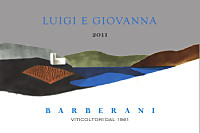
 Grechetto (90%), Procanico (10%)
Grechetto (90%), Procanico (10%) Brilliant straw yellow and nuances of straw yellow, very transparent.
Brilliant straw yellow and nuances of straw yellow, very transparent. Intense, clean, pleasing, refined and elegant, starts with hints of
apple, honey and plum followed by aromas of hawthorn, pear jam, broom,
citrus fruits, mature peach, hazelnut and mineral.
Intense, clean, pleasing, refined and elegant, starts with hints of
apple, honey and plum followed by aromas of hawthorn, pear jam, broom,
citrus fruits, mature peach, hazelnut and mineral.
 Crisp attack and however balanced by alcohol, good body, intense
flavors, pleasing roundness.
Crisp attack and however balanced by alcohol, good body, intense
flavors, pleasing roundness.
 Persistent finish with flavors of apple, plum and honey.
Persistent finish with flavors of apple, plum and honey. 6 months in cask.
6 months in cask. Stuffed pasta, Roasted white meat, Roasted fish, Mushroom soups
Stuffed pasta, Roasted white meat, Roasted fish, Mushroom soups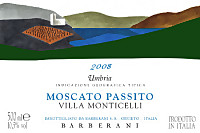
 Muscat Blanc
Muscat Blanc Brilliant amber yellow and nuances of amber yellow, moderate
transparency.
Brilliant amber yellow and nuances of amber yellow, moderate
transparency.
 Intense, clean, pleasing, refined and elegant, starts with hints of
raisin, dried fig and citrus fruit peel followed by aromas of dried
apricot, peach jam, honey, cedar, candied fruit, lavender, thyme, sage and
nail polish.
Intense, clean, pleasing, refined and elegant, starts with hints of
raisin, dried fig and citrus fruit peel followed by aromas of dried
apricot, peach jam, honey, cedar, candied fruit, lavender, thyme, sage and
nail polish.
 Sweet attack and however balanced, good body, intense flavors, pleasing
crispness.
Sweet attack and however balanced, good body, intense flavors, pleasing
crispness.
 Persistent finish with flavors of raisin, dried fig and dried apricot.
Persistent finish with flavors of raisin, dried fig and dried apricot. Aged in steel tanks.
Aged in steel tanks. Confectionery, Jam tarts, Hard cheese
Confectionery, Jam tarts, Hard cheese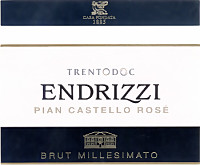
 Pinot Noir
Pinot Noir Brilliant salmon pink and nuances of salmon pink, transparent, fine and
persistent perlage.
Brilliant salmon pink and nuances of salmon pink, transparent, fine and
persistent perlage.
 Intense, clean, pleasing, refined and elegant, starts with hints of
cherry, raspberry and blueberry followed by aromas of strawberry, bread
crust, cyclamen, apple, yeast, plum, citrus fruits and vanilla.
Intense, clean, pleasing, refined and elegant, starts with hints of
cherry, raspberry and blueberry followed by aromas of strawberry, bread
crust, cyclamen, apple, yeast, plum, citrus fruits and vanilla.
 Effervescent and crisp attack, however balanced by alcohol, good body,
intense flavors, agreeable.
Effervescent and crisp attack, however balanced by alcohol, good body,
intense flavors, agreeable.
 Persistent finish with flavors of cherry, raspberry and strawberry.
Persistent finish with flavors of cherry, raspberry and strawberry. Refermented in bottle on its lees for 60 months.
Refermented in bottle on its lees for 60 months. Stuffed pasta, Roasted white meat, Roasted fish, Mushroom soups
Stuffed pasta, Roasted white meat, Roasted fish, Mushroom soups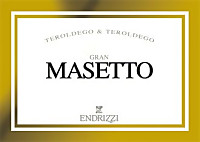
 Teroldego
Teroldego Deep ruby red and nuances of ruby red, impenetrable to light.
Deep ruby red and nuances of ruby red, impenetrable to light. Intense, clean, pleasing, refined and elegant, starts with hints of
black cherry, blackberry and plum followed by aromas of violet, blueberry,
dried rose, vanilla, chocolate, mace, cinnamon, tobacco and menthol.
Intense, clean, pleasing, refined and elegant, starts with hints of
black cherry, blackberry and plum followed by aromas of violet, blueberry,
dried rose, vanilla, chocolate, mace, cinnamon, tobacco and menthol.
 Tannic attack and however balanced by alcohol, full body, intense
flavors, pleasing roundness.
Tannic attack and however balanced by alcohol, full body, intense
flavors, pleasing roundness.
 Very persistent finish with long flavors of black cherry, blackberry
and plum.
Very persistent finish with long flavors of black cherry, blackberry
and plum.
 Produced with partially dried grapes. 20 months in barrique, 6 months
in bottle.
Produced with partially dried grapes. 20 months in barrique, 6 months
in bottle.
 Game, Roasted meat, Stewed and braised meat, Hard cheese
Game, Roasted meat, Stewed and braised meat, Hard cheese
 Chardonnay (50%), Pinot Noir (50%)
Chardonnay (50%), Pinot Noir (50%) Pale straw yellow and nuances of straw yellow, very transparent, fine
and persistent perlage.
Pale straw yellow and nuances of straw yellow, very transparent, fine
and persistent perlage.
 Intense, clean, pleasing, refined and elegant, starts with hints of
apple, banana and plum followed by aromas of bread crust, hawthorn, yeast,
praline, grapefruit, tangerine, acacia and butter.
Intense, clean, pleasing, refined and elegant, starts with hints of
apple, banana and plum followed by aromas of bread crust, hawthorn, yeast,
praline, grapefruit, tangerine, acacia and butter.
 Effervescent and crisp attack, however balanced by alcohol, good body,
intense flavors, agreeable.
Effervescent and crisp attack, however balanced by alcohol, good body,
intense flavors, agreeable.
 Persistent finish with flavors of apple, grapefruit and plum.
Persistent finish with flavors of apple, grapefruit and plum. Referments in bottle on its lees for 42 months.
Referments in bottle on its lees for 42 months. Roasted fish, Roasted white meat, Stuffed pasta, Fried fish, Broiled crustaceans
Roasted fish, Roasted white meat, Stuffed pasta, Fried fish, Broiled crustaceans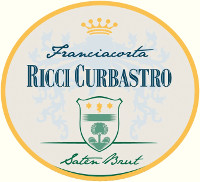
 Chardonnay
Chardonnay Pale straw yellow and nuances of straw yellow, very transparent, fine
and persistent perlage.
Pale straw yellow and nuances of straw yellow, very transparent, fine
and persistent perlage.
 Intense, clean, pleasing, refined and elegant, starts with hints of
banana, apple and bread crust followed by aromas of hawthorn, citrus
fruits, plum, honey, grapefruit, praline, butter, yeast and vanilla.
Intense, clean, pleasing, refined and elegant, starts with hints of
banana, apple and bread crust followed by aromas of hawthorn, citrus
fruits, plum, honey, grapefruit, praline, butter, yeast and vanilla.
 Effervescent and crisp attack, however balanced by alcohol, good body,
intense flavors, agreeable.
Effervescent and crisp attack, however balanced by alcohol, good body,
intense flavors, agreeable.
 Persistent finish with flavors of apple, banana and hazelnut.
Persistent finish with flavors of apple, banana and hazelnut. Refermentation in bottle and aged on its lees for about 40 months.
Refermentation in bottle and aged on its lees for about 40 months. Pasta and risotto with fish and crustaceans, Sauteed white meat, Sauteed crustaceans, Roasted fish
Pasta and risotto with fish and crustaceans, Sauteed white meat, Sauteed crustaceans, Roasted fish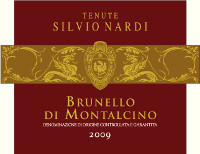
 Sangiovese
Sangiovese Brilliant ruby red and nuances of garnet red, moderate transparency.
Brilliant ruby red and nuances of garnet red, moderate transparency. Intense, clean, pleasing, refined and elegant, starts with hints of
black cherry, plum and violet followed by aromas of blueberry, raspberry,
dried rose, vanilla, cinnamon, tobacco, chocolate, mace and menthol.
Intense, clean, pleasing, refined and elegant, starts with hints of
black cherry, plum and violet followed by aromas of blueberry, raspberry,
dried rose, vanilla, cinnamon, tobacco, chocolate, mace and menthol.
 Tannic attack and however balanced by alcohol, good body, intense
flavors, agreeable.
Tannic attack and however balanced by alcohol, good body, intense
flavors, agreeable.
 Persistent finish with flavors of black cherry, plum and raspberry.
Persistent finish with flavors of black cherry, plum and raspberry. 12 months in barrique, 12 months in cask, at least 6 months in bottle.
12 months in barrique, 12 months in cask, at least 6 months in bottle. Game, Roasted meat, Stewed and braised meat, Hard cheese
Game, Roasted meat, Stewed and braised meat, Hard cheese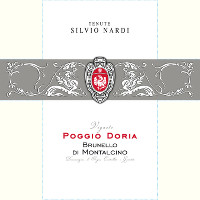
 Sangiovese
Sangiovese Brilliant ruby red and nuances of brick red, moderate transparency.
Brilliant ruby red and nuances of brick red, moderate transparency. Intense, clean, pleasing, refined and elegant, starts with hints of
black cherry, raspberry and plum followed by aromas of violet, blueberry,
pink pepper, dried rose, chocolate, tobacco, cinnamon, vanilla, mace and
menthol.
Intense, clean, pleasing, refined and elegant, starts with hints of
black cherry, raspberry and plum followed by aromas of violet, blueberry,
pink pepper, dried rose, chocolate, tobacco, cinnamon, vanilla, mace and
menthol.
 Tannic attack and however balanced by alcohol, full body, intense
flavors, pleasing crispness.
Tannic attack and however balanced by alcohol, full body, intense
flavors, pleasing crispness.
 Very persistent finish with long flavors of black cherry, raspberry and
plum.
Very persistent finish with long flavors of black cherry, raspberry and
plum.
 18 months in barrique, 12 months in cask, at least 36 months in bottle.
18 months in barrique, 12 months in cask, at least 36 months in bottle. Game, Roasted meat, Stewed and braised meat, Hard cheese
Game, Roasted meat, Stewed and braised meat, Hard cheese
